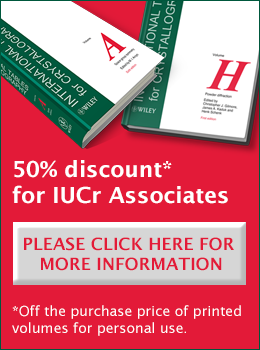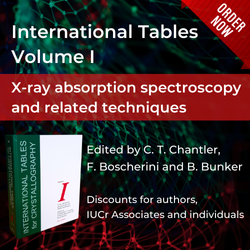
Obituary
Stephen Edward Tarling (1960–2023)
![Thumbnail [Thumbnail]](https://www.iucr.org/__data/assets/image/0004/158710/Thumbnail.jpg)
Dr Stephen Tarling, who died suddenly from pancreatic cancer at the end of October 2023, was a larger-than-life figure. As an undergraduate, he studied chemistry at the University of Surrey at Guildford, UK, where he became interested in crystallography, no doubt as a result of the influence of Robin Shirley with whom he did his third-year project. Robin had started his PhD with Professor Kathleen Lonsdale at University College London (UCL), so Stephen was following in fine footsteps. Stephen then moved to the Department of Crystallography at Birkbeck College London, where he studied for a PhD supervised by Professor Paul Barnes and with co-supervision from Professor Alan Mackay. For his thesis, he worked on the structure of pigments, particularly ultramarine, as he had a CASE (Cooperative Award in Science and Engineering) studentship sponsored by the Colours Division of Reckitt & Colman. I still recall a great talk he gave on the subject, probably at a British Crystallographic Meeting (BCA) meeting, in which he discussed the importance of ultramarine in Renaissance paintings. At that time, ultramarine from lapis lazuli was a very valuable mineral pigment and would have been used for the blue colour in the clothes worn by the Virgin Mary.
It was at around this point in time that I first encountered Stephen as a fellow PhD student. Paul Barnes had taken what appeared to be his whole research group, known as the Industrial Materials Group, to do an experiment at the Institut Laue Langevin, Grenoble, France. Working on D1A at that time, I regularly interacted with any British-based team visiting the ILL, and I was immediately struck by this “cheeky chap” working on D1B on the other side of the guide tube to myself who was clearly enjoying his first visit to the ILL. I recall discussing powder diffraction with Stephen, amongst other topics, during his stay. I also learnt that the whole group had taken a ferry across the Channel to the Netherlands (which was perfect for Stephen as he was half-Dutch) and had driven down to Grenoble, presumably as the Science Research Council in those days would only fund flights for three people.
Following that early meeting, I encountered Stephen on several occasions through BCA meetings. In particular, via Paul Barnes’ contact with Mike Glazer in Oxford, Stephen started using his PXRD expertise to work in patent litigation. In particular, Stephen worked on many of the famous pharmaceutical patent cases from the late 1980s to the early 1990s, and I can vividly recall him giving several enjoyable talks on this subject with Mike Glazer at BCA events. Stephen was clearly in his element in this field: he had a brain that was very quick on the uptake and he was well suited to answering the sort of questions that lawyers try to use to trip up unwary expert witnesses. In another career, he might well have become an excellent patent attorney.
Stephen was also a great teacher and, with Paul Barnes, taught crystallography in the Department of Archaeology at UCL in the late 1980s. Stephen’s work on pigments led him to work with Anna Bennett, who worked at Birkbeck College and researched objects for the British Museum, especially whether the objects were genuine or fake. Stephen also examined historical material from Uppark House, a National Trust property in Hampshire, after it was ravaged by fire. Many years later, following the restoration of the house, Stephen very kindly invited Martin Vickers and me to view it at a special opening, even though I had nothing to do with the analysis work. As I had no car at that time, Stephen even detoured on his trip from London in order to pick me up in his sports car. This was a typical example of Stephen’s generosity.
On finishing his PhD, Stephen had a five-year appointment with British Gas. Around that time, British Gas consolidated its research facilities with its X-ray equipment, which was moved from London to Loughborough. When British Gas decided subsequently that they wanted to dispose of their STOE transmission powder X-ray diffractometer, Stephen very generously tipped me off. The only condition: it was free for us to collect but it had to be collected by the end of the week! Needless to say, I leapt at the opportunity, and I still recall dashing up the M1 with Martin Vickers in a small hire van to collect it, but unwittingly leaving behind around £10k of electronics, which were hidden out of sight behind an aluminium panel.
When Stephen’s position at British Gas came to an end, he returned to a technical position he had held at the end of his PhD in the Department of Crystallography, for which he was well overqualified. Given that Martin Vickers had been appointed to run the PXRD equipment, Stephen had no future within the Industrial Materials Group, and he was given the role of interacting with the Estates team. I am told that he ran rings around them: he was noted for his famous clipboard on which he noted everything down at meetings. At the following meeting, when work had not been done as promised, he quoted back to them all of their promises! In addition, Stephen became heavily involved in writing web pages to benefit the Department, a job he took on with gusto and especially to the benefit of those needing it most, for example, the facilities provided by the workshop technician Paul Stukas.
One of my final interactions with Stephen as a crystallographer was at a satellite meeting to the IUCr Beijing Congress in 1996. We both attended the Powder Diffraction meeting in Hangzhou, and we both met up with Robin Shirley. Stephen was an enthusiastic cyclist and so he persuaded us to rent bicycles so that we could get easily around the city, this being a time when bicycles were still the dominant form of transport within most Chinese cities. Stephen had always been keen on going to restaurants and so we ended up having some great meals out together as well.
![[Fig. 1]](https://www.iucr.org/__data/assets/image/0005/158711/StephenTarling.jpg)
The late 1990s saw a period of change in universities with lots of support roles being created. Stephen became a Scientific Staff Development Officer at Birkbeck College before he moved down the road to UCL in the same role, oddly enough at about the same time the Industrial Materials Group at Birkbeck College moved to the Department of Chemistry at UCL, with the old Department of Crystallography working purely on biological research. Stephen subsequently moved to Southampton University in a similar role, an opportunity for him and his partner Anita to set up home in the village of Sway in the New Forest. At a celebration to mark Stephen’s life last November, I heard from many local people about how Stephen had been the life and soul of the village. For a number of years, he had been an active local parish councillor as well as being a board member of the New Forest National Park Authority. As at Birkbeck College, he had brought his internet skills to the fore again in creating local web pages for the benefit of others. At local fetes, he would interact with all of the stall holders, encouraging them when he could by buying local produce and, if not buying, encouraging them to sell their wares. Stephen’s death came very suddenly: he had attended local meetings fortnightly as regular as clockwork, so it was notable when he missed the first one; by the next meeting he was sadly dead. Stephen will be missed by all of us who knew him well.
Jeremy Karl Cockcroft is at the Department of Chemistry, UCL, London, UK.
Article adapted from Crystallography News, published by the British Crystallographic Association.
For a list of papers by Dr Tarling appearing in IUCr journals click here.
Copyright © - All Rights Reserved - International Union of Crystallography








